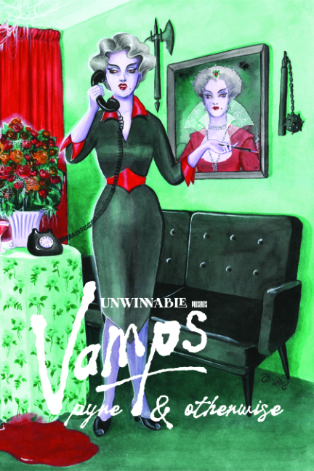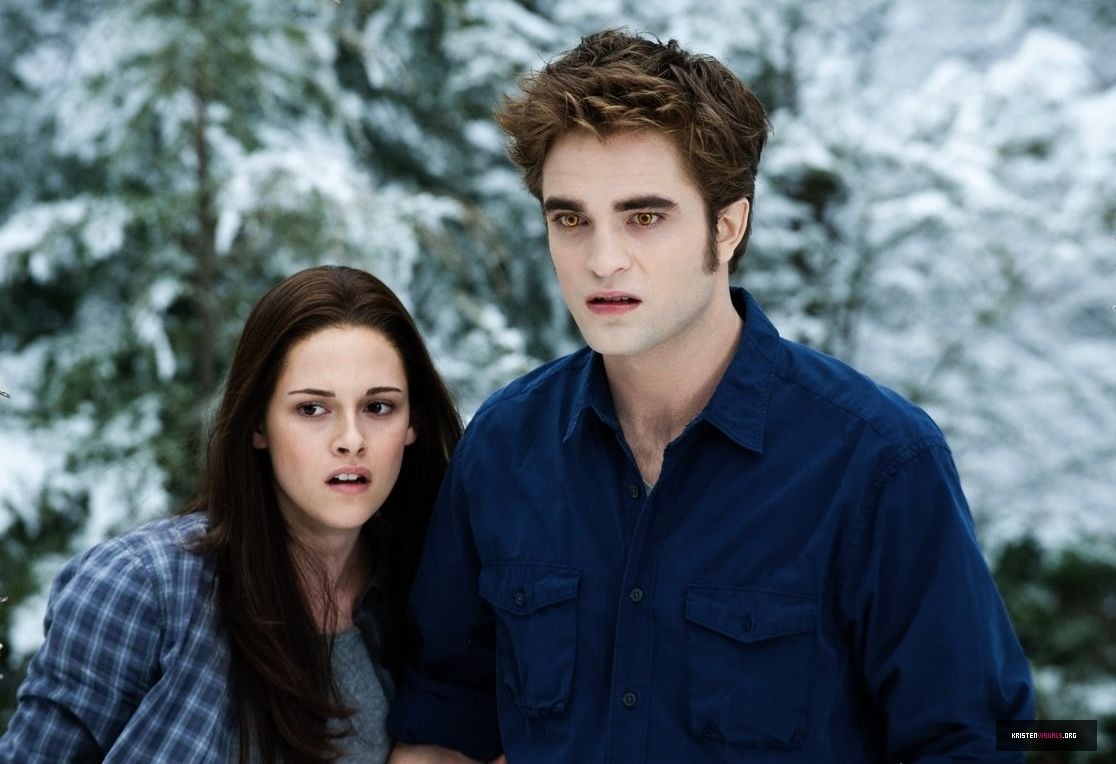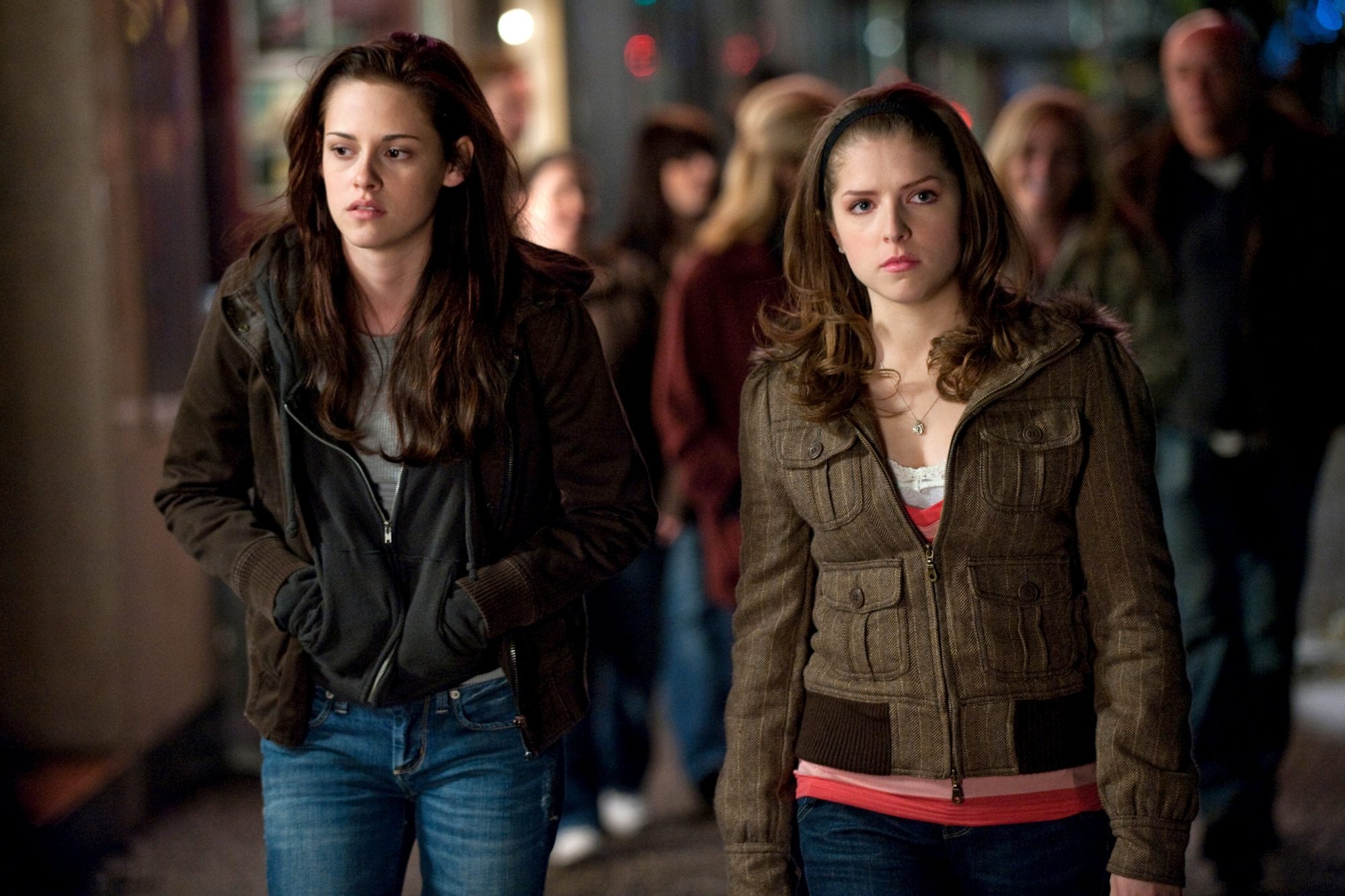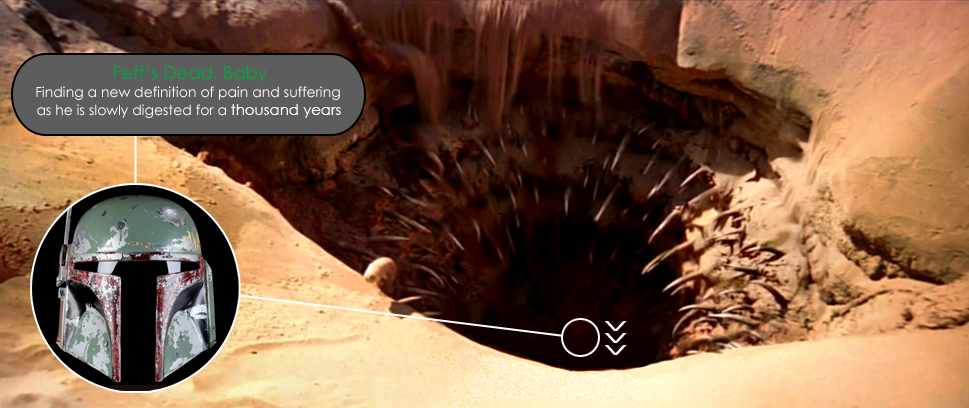
Taking the Cullens to Uniqlo

This column is a reprint from Unwinnable Monthly #168. If you like what you see, grab the magazine for less than ten dollars, or subscribe and get all future magazines for half price.
———
What’s left when we’ve moved on.
———
A couple of months ago, I rewatched all the Twilight movies. I know I’ve seen them all before, but they kind of run together. The only one I remember seeing was Eclipse, which I saw in theaters for a friend’s birthday in eighth grade. I was on team Jacob. I didn’t realize Kristen Stewart was wearing a wig. The whole deal.
I liked Twilight when it came out, and though I like it less now, the first movie is actually interesting to me. Eclipse is the best one narratively speaking, but Twilight has its own charm because it feels like several movies someone stapled together. The lighting is wild, but what really stuck out to me on this rewatch were the costumes. Amongst a resurgence of 2000s fashion this year it was jarring to see people wearing those outfits, but without any retro sensibility or irony. For me, it conjured the bleak memory of boot cut jeans and jackets that only go down to your mid-waist. If you were in middle or high school in the late 2000s, I’m sure you have your own version.
I watched all the movies over about three weeks, forgot about them, and then, one night, I went scrolling on Uniqlo.
Uniqlo is a Japanese casual wear manufacturer which first opened stores in North America almost two decades ago. It’s incredibly popular, being the top brand in China in 2021 and (at that time) in a position to overtake its two competitors, Zara and H&M, internationally. Most of its clothes are solid colors, and a lot of them use the textures of outdoor wear. If there’s an art to dressing models top to bottom in your brand without making that fact obvious, Uniqlo hasn’t mastered it. The models break up all the similar colors and textures with baseball hats and belts, like a ten-layer cake of Uniqlo.
I was there to buy some tights, which I always buy from Uniqlo even though they’re not very sturdy (why I buy them every year). But I had to scroll through a few other sections first: dress pants, a crescent-moon bag I’ve thought about buying for over a year, long crinkly skirts. New sweaters don’t drop until next month, so I skip those. Ultimately, I ended up closing the tab without putting anything in my cart, but I know I’ll be back once it’s colder. Uniqlo has an allure equal to any other clothes retailer, but instead of “I want this, but where would I wear it” the refrain is “I want this and I’d wear it anywhere”. My life isn’t going to majorly change if I buy something from Uniqlo; at most it will make the things I already do slightly more bearable.

I remembered this article which argues Uniqlo clothes are “a neutral scaffolding with which to venture out into the world, a preset palette of aesthetics and narratives that is accessible and slightly interesting without being threatening.” For the record, I like Uniqlo, even if some of their clothes are a little plasticky. But it’s true: you can wear Uniqlo anywhere. Its styling is bizarre and frequently, ugly. I don’t know of a better way to summarize Twilight’s fashion.
That fashion gets a bad rap because it’s a late example of 2000s dress code. But there’s another major aspect that gets overlooked: it looks weird because it’s PNW fashion. I went to college in Portland and grew up in Northern California before that. I know PNW fashion; I lived it. (See: 20% of my college having Camelbak backpacks.)
Bella is constantly in flannel and hoodies. They didn’t even get her a good waffle knit; just long sleeve shirts with a keyhole neckline. She gets increasingly more feminine over the course of the movies, ending with her transformation into a glam vampire queen. Her outfits have ruffled sleeves or strange layering. Her style looks purposeful, but it communicates an outsider-ness about her character that, given the inconsistency of the series’ writing, seems like it might not even be intentional.
Bella’s fashion is why people still talk about the costuming in these movies. Her classmates are all more toned down (and, oddly, less obviously PNW) versions of her outfits, with layered tanks under polo shirts for the guys and short sleeve henleys for the girls. Jacob et al break the fashion barrier entirely (no shirts). The Cullen family’s outfits, though, are in a different category. Even though the costumers clearly want to communicate each family member’s personality through their clothes, they all look kind of samey. Astoundingly, each main character had *six of each outfit* (plus extras for stunt doubles!) so they had to shop at places where they could buy in bulk.

As some of my colleagues are writing about elsewhere in this issue, vampire clothes are flowy and dark, goth, cool. They are counter-culture. But the vampires in Twilight are mainstream culture. They have to be. They shop at Abercrombie (before the renaissance) and Eileen Fisher. Even the Volturi, the big evil vampires that show up in the later movies, dress in black officiant’s robes that are totally boring. Alice is the one exception to this, but she just goes down the street to Free People.
The Cullens are prepsters, which is further underscored by their political leanings (I gasped when Eclipse reminded me Jasper was in the Confederate Army). They are unbothered by anything outside their sphere, which, to be fair to them, does include human-eating vampires trying to take over their vegetarian territory. Still, it’s such a provincial issue that the later movies really have to raise the stakes and make the morality ever more black and white – these guys are the bad vampires, promise! – so that the little ambiguity that was in the previous films falls away.
While I like Kristen Stewart’s outfits in the last movie, and I’d probably rather wear them than whatever’s going on in the first two, they lose some charm for me. They communicate that she’s a vampire lady now, not a girl, providing visual evidence of her personal growth. Bella herself did grow on me, and she’s the best acted main character in the final movies bar none. But as her fashion gets more adult, it also conforms to the vampire style I was just talking about: not as preppy, but more just basic. Every outfit has the same v-neck + tight fitting silhouette.
Vampire style is basics on basics. It’s neutral colors and inoffensive accessories. Vampire ideology, in the Twilight universe, is similarly logical and mechanistic. Bella marries into a family which is first posed as counterculture and then reveals itself to be conservative as the movies go on. The Cullens don’t want anything to change. They want to exist on the fringes of human society, to avoid pissing off Big Vampire and to keep their nice house.
In order to fit in, Bella has to conform while insisting, over and over, that she’s still her own person. This offers up a more pessimistic, and more interesting, reading of some of the scenes in Breaking Dawn, where a violently sick Bella ensures her (reasonably!) worried dad that she’s not being trafficked or abused. (For the record, though Bella has the most interesting fashion in the series, the award for best fashion has to go to Charlie.) We see her comforting people by insisting that she’s informed enough about the choice she made, and in a series that almost never lets Bella be the last word on a subject, everyone surprisingly just kind of gives up.

I think the movies want us to interpret this as a moment of agency, finally, for Bella, but it came across more to me as a form of hetero-pessimism. In the first movie, Bella opines about how unpopular she is to what becomes a hilarious degree since everyone at her school seems to love her. In the later ones, she spends all her energy thinking about her love triangle. Her main point of agency is just acquiescing to something that was out of her control to begin with; her single-minded goal to become part of this family stops being silly and starts feeling self-destructive.
I’m not saying Twilight itself believes this. But it foreshadows it in dress, in Stewart’s heavy eye makeup and the pregnancy CGI, and most of all in her transition to a more basic, more adult style. Bella is growing up. Or, Bella is being absorbed into a machine.
Twilight is formed around the old chestnut that you become more conservative as you get older, repackaged as a little crunchy, a little sexy, but still ending in babies and a house, even if you do vampire hunts on the weekend. Its fashion crosses some lines, especially when it comes to the first and last movies, but ultimately it snaps back. Like the controversial ending of Girls, we have a heroine who chooses a life that seems at odds with what she actually desires. Both these franchises position the turn towards motherhood as, if not desirable, at least natural. But in the case of Twilight, that turn also comes with an undercurrent of wrongness. Bella resists the normative, but it comes for her anyway. What could be scarier than that?
I think if you made Twilight in 2023, Esme and her husband (it’s Carlisle, I just had to google it) would wear Uniqlo cashmere. The brand contains multitudes, the basic slacks and v neck sweaters you could wear to the office, but also the lime green A-line dress or the shackets that come in fourteen colors. Even so, you can only get so wild with Uniqlo. To stand out, eventually you’ll have to add something of your own. But for Twilight-core, this is exactly the point: blending in and being normative to the point of unrecognizability. That, not inner darkness, is where the horror comes out.
Allegedly, Twilight fashion is back, by which I think people just mean lace trim and low-rise jeans. Maybe that means they’re going to do an adaptation of Midnight Sun or something. If they do, Bella might be in mom jeans, but Edward will be wearing 3D knit.
———
Emily Price is a freelance writer and PhD candidate in literature based in Brooklyn, NY.




